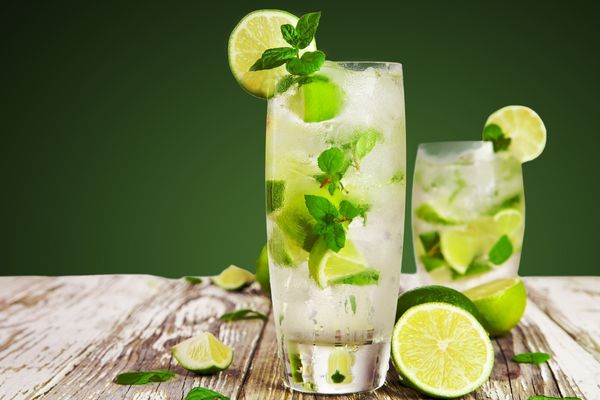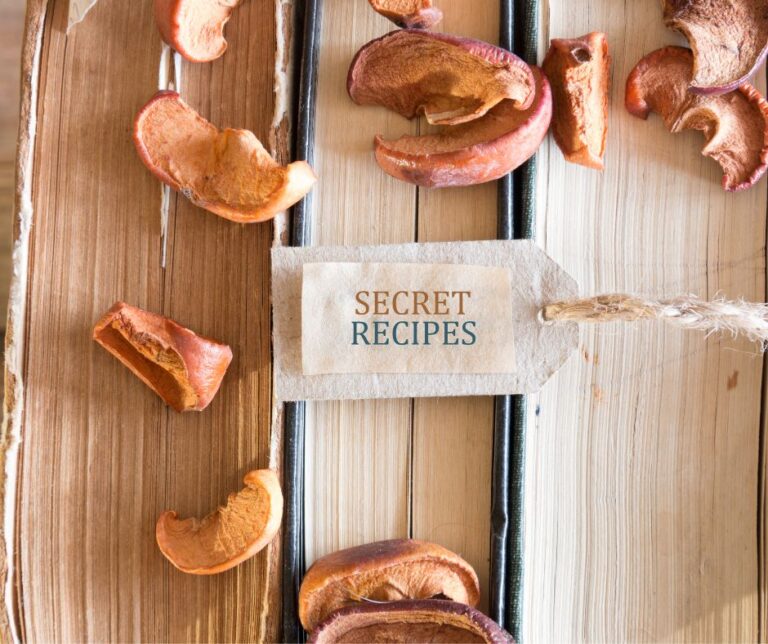Have you ever wondered what the Colonels 11 secret herbs and spices are?
When building a food business, your recipes are years of your life that you have spent testing and tasting and crying over.
Creating something unique that no one else has will set you apart from companies already in the playing field, and it will prevent the dreaded copycats.
Trying to protect your food business and recipes you have developed with copywrites and patents is challenging – So by ensuring what you are creating is kept a Secret – You will be able to keep the copycats at bay!

The words “Secret recipe” does capture the imagination.
Have you ever wondered about the following recipes or companies?
Several other closely guarded recipes in the food industry are considered trade secrets, similar to KFC’s secret recipe. Here are a few examples:
The 11 secret herbs and spices used in KFC’s original recipe chicken have been a closely guarded secret for decades. While there have been many claims and rumours about the recipe, KFC has never officially revealed the exact blend of spices used in their chicken.
In 2016, the Chicago Tribune claimed to have discovered a handwritten recipe that included 11 herbs and spices. However, KFC denied the recipe was authentic and stated that their recipe is still a secret and it remains a mystery and part of KFC’s brand identity and legend.
Coca-Cola: The formula for Coca-Cola has been a closely guarded secret since the drink was invented in 1886. Only a few executives know the exact recipe, and the formula is kept in a vault at the World of Coca-Cola museum in Atlanta.
McDonald’s Special Sauce: McDonald’s has never revealed the exact recipe for their special sauce, which is used on their Big Mac burgers. However, the company did release a list of the ingredients used in the sauce in 2017.
Mrs. Fields’ Cookies: Mrs. Fields’ cookie recipe is also considered a trade secret, and the company has never revealed the exact recipe. The cookies are made from a mixture of ingredients blended in precise proportions to create their signature taste.
Australian iconic secret recipes
Vegemite – Vegemite is the iconic Australia spread, and we still need don’t know exactly what we are smearing over our toast.
The recipe has been kept secret for over 95 years. The spread is made from leftover brewer’s yeast extract and various vegetable and spice additives.
Bundaberg Rum: Bundaberg Rum is an Australian rum brand that has existed since 1888. Its recipe has been a closely guarded secret for over 130 years and is only known by a select few employees.
Arnott’s Tim Tams – Tim Tams is another iconic product in Australia, and their recipe has been kept secret for over 50 years.
If only we knew how to replicate them!!
Red Rooster Chicken – Red Rooster BBQ Chicken is amazing – That skin is always the best part, and the recipe is a closely guarded secret and is said to contain a blend of over 13 herbs and spices.
How can I keep the ingredients a secret if people need to know what they eat?
Keeping a recipe secret can be daunting, especially in the age of social media and the internet.
While the exact recipe and proportions of ingredients used in a product may be a closely guarded secret, food companies must still disclose certain information on their product labels.
In Australia, food labels are required to list all ingredients in descending order by weight and any potential allergens. This information is important for consumers with allergies or intolerances to certain ingredients.
Food companies may use generic terms to describe certain ingredients to maintain their recipes’ secrecy.
For example, instead of listing “11 herbs and spices” on their label, KFC lists “spices” as one of the ingredients allowing the company to maintain the secrecy of their recipe while still complying with labelling requirements.
It’s also worth noting that while the exact recipe may be a secret, food companies are still subject to food safety and quality regulations and ensure that their products are safe for consumption and meet certain quality standards, regardless of the ingredients used in the recipe.

The challenges of having a “Secret Recipe”
Having a secret recipe or propriety blend will create curiosity and there will be pressure from your competitors when they see your products starting to make a dent in their sales.
You will need to have some processes to keep your IP as your own!
Challenges of maintaining your recipes confidentiality
Risk of employees or competitors discovering the recipe: Employees may try to steal the recipe or sell it to a competitor.
Competitors will take action: They may attempt to reverse-engineer the recipe or steal it.
Difficulty scaling up production: Secret ingredients may be problematic to source in large quantities or prohibitively expensive.
Strategies for maintaining secrecy:
Limit access to the recipe: Limit the number of employees with access to the recipe. Ensure that the employees with access are trustworthy and sign a non-disclosure agreement.
You can use nondescript language on packaging and ingredient lists: Instead of using specific names for ingredients, use general descriptions that are difficult to trace back to the actual ingredient. An example of this is saying “mixed herbs” or a “proprietary blend.”
Implement strict quality control measures: Ensure that each batch of the product is consistent in taste and quality to prevent employees from noticing any changes in the recipe.
Protect the recipe through legal means: Obtain a patent or trademark to prevent competitors from using it.
Use multiple suppliers for secret ingredients: Using various suppliers for secret ingredients can prevent any one supplier from knowing the complete recipe.
Keeping a recipe secret can be challenging, but businesses must maintain their competitive edge. By implementing strict security measures and protecting the recipe legally, businesses can safeguard their secret recipes from competitors and maintain their market position.
Do Recognised Recipes Ever Change?
At times your recipes will need to be adapted or modified. One major reason for a small food businesses is when they have to scale.
When you pivot a business from small quantities to creating a recipe that works for more larger production, the recipe and formula must be modified. When you started, you may have been producing your product in a home commercial kitchen, when you suddenly get an order or contract with a supplier, you will have to increase production which will mean larger quantities being made in each batch.
Over the years, recipes do change and this often to make the product “healthier” – Some of the noticeable ones have been
McDonald’s: In 2011, McDonald’s announced that it was reducing the amount of sodium in its chicken McNuggets by 10%. The change was made in response to concerns about the high levels of sodium in fast food, which can contribute to high blood pressure and other health problems.
In 1976, M&M’s candies in the USA faced a controversy when a report from a consumer group claimed that the food dyes used in the candies were harmful to children. As a result, M&M’s parent company, Mars Inc., decided to remove the red dye, which was found to be the most harmful, from the candy’s colour mix.
In 1987, after further studies, the red dye was deemed safe for consumption, and Mars Inc. reintroduced it.
Today, M&M’s are still produced without some artificial colourings and instead, where possible, use natural colourings derived from beet juice and annatto extract.
Can a recipe be trademarked in Australia?
Believe it or not, a stand-alone recipe cannot be trademarked in Australia. However, if a recipe is used in association with a particular brand or product, then that brand or product can be trademarked.
Copyright law protects a recipe’s written or recorded expression but not the idea behind it. This means that someone else could use the same ingredients to create a similar recipe as long as they don’t copy the exact wording or instructions.
Trade secret law can be used to protect a recipe if it is kept secret and not disclosed to the public.
This can include using nondescript language on packaging and ingredient lists and limiting access to the recipe to a select group of employees.
Patent law may be used to protect a recipe if it involves a new and inventive process or composition of ingredients. However, obtaining a patent for a recipe can be difficult and expensive and may not be practical for most recipes.
Here are some sources for information on trademarking recipes in Australia:
- IP Australia – “Can I register a recipe as a trade mark?” – Link: https://www.ipaustralia.gov.au/trade-marks/understanding-trade-marks/types-trade-marks/can-i-register-recipe-trade-mark
- Australian Business Lawyers & Advisors (ABLA) – “Can you protect your recipe under IP law?” – Link: https://www.ablawyers.com.au/can-you-protect-your-recipe-under-ip-law/
- Australian Institute of Food Science and Technology (AIFST) – “IP Protection for Food & Beverage Products” Link: https://www.aifst.asn.au/blog/ip-protection-for-food-beverage-products/
The secret recipe wrap up
Keeping a recipe secret is not always going to be easy, but it can be a valuable asset for a food business to differentiate itself from competitors and have an asset that will be a part of the business if you do sell it.
With the right strategies and legal protections, a company can keep its secret recipe safe while complying with labelling requirements and ensuring food safety and quality standards. In addition, by maintaining the confidentiality of the recipe, a company can create a sense of mystery and curiosity around its product, which can lead to increased sales and brand recognition.
Working with Alinta Organic Foods can help a food business with our range of high-quality organic and natural ingredients, which can help your food businesses create unique and high-quality products as we source unique ingredients.
Alinta Organic Foods is committed to maintaining the confidentiality of its clients’ recipes and formulations. We understand the importance of keeping secret recipes a secret and take measures to ensure that their client’s intellectual property is protected.
By partnering with Alinta Organic Foods,your can leverage these benefits to create distinctive and delicious products to set yourself apart.
Get in touch to enquire what ingredients you need to be able to source.



